Ever wonder how Tim takes such amazing pictures from space? Behind all good work is a great teacher: professional photographer Max Alexander has known Tim Peake from before his launch into space, including documenting his Soyuz training in November 2015. The two kept in touch via email and Max has been giving Tim advice throughout his six-month Principia mission on the International Space Station. The duo allowed us to publish some of their correspondence, we added pictures of Tim’s to illustrate.
GENERAL NOTES
- I’m sure you know about Depth of Field (range of sharp focus) and the Law of Reciprocity (e.g., 1/125 sec @ f8 will give you the same ‘exposure’ as 1/250 sec @ F5.6, etc. – the same applies to integrated ISO settings); if you have questions though, about these or anything else, let me know
- Your low light work is really great; great you are getting stars in the photos – keep using that 50mm f1.4 & 24mm f1.4
- Spectacular colours (sunrise/sunset) picture recently posted is exquisite
- I’m using Chris Hadfield as a point of reference for some of this; I know you’ll want to be Tim Peake and not Chris Hadfield but I’m using his photography as a guide in some instances
- You should have the Nikon D4 manual on your ipad that I sent you – if required
- When all is said and done, the mantra in photography is F8 and be there; i.e., keep it simple – and you most certainly are there!
COMPOSITION, AESTHETICS & LIGHT
-
Look for abstract shapes; (a real strength of Chris Hadfield); just use your instincts – you already have a fantastic feel for this
- Think artist (like scientist, engineer, plumber); be in that mode of thinking – but you don’t have to be arty all the time
- Chris Hadfield used “methodical planning” for some shots, and this may a good heads up in particular for your impact crater pictures
- Make strong diagonals across the frame (you have already been doing this)
-
Repetition – look for repetitions in nature and manmade objects
- Rule of thirds; look for this
- Break the rules too!
- Check the edges of the frame frequently – this is a mantra (anything extraneous to the image is distracting); cropping is possible of course, but sometimes you can’t
- With foreground elements (e.g., ISS, supply spacecraft) constantly check the background – the goal is to have the subject against a clean background; this is very important
- Offset the subject, if it works, so it’s not always in the centre of the frame
- ‘Frame’ the subject, when you see this – like you did beautifully in the Panama Canal shot with the clouds top & bottom – great shot!
- Look out for the glint – the highlight that appears to move around the Earth; the glint catches water, snow, etc.; consider using exposure bracket to nail this
-
Oblique light is dramatic and shows terrain relief (early morning and late afternoon) – like in your ‘Winter Landscape’ (also excellent way to shoot snow – direct overhead sun often doesn’t work for snow/whites); this technique is really great for impact craters too, if possible
- Think hard about the light – this is your main tool, and what you see is generally what you get
- See the picture with your eyes, not just through the camera
TECHNICAL
Exposure
- Decide what you want to expose for: Holding detail in highlights versus sometimes letting highlights go (saturated); you have already achieved this balance very well, e.g., ‘Just before Dawn’
- Saturated (overexposed) highlights are pretty much lost, and only recoverable up to a point
- If in doubt, underexpose slightly and lighten picture in processing
- When metering for exposure, look for ‘average tones’ – not bright highlights/whites or darks
Bracketing
For difficult exposures, including high contrast situations, changing light/exposures – consider using Bracketing (gives you a range of different exposures, centred around ‘midpoint’ exposure)
- Press & hold BKT button (on top left)
- Rotate main command dial to choose number of shots in bracketing sequence (Move dial to the right for 3 or 5 frames in 1/3 stops; gives you a ‘midpoint’ and 1/3 either side (3 Frames), or a wider range of two 1/3 stops (5 frames) either side of midpoint
- Set Release Mode to CH (for fastest frame capture); this will give you a short burst (of the 3 or 5 frames) when you hold down shutter
- Be careful to take off settings for next set up
ISO
- Looks like the highest ISO default on D4 is 8,000/10,000, and that seems a very good cut off for D4 for noise, without getting into noise reduction in processing
- Make sure you reduce high ISO when you move into daylight (on Earth); easy to forget
Contrast
- Use ‘Contrast’ in enhancement/post-production (I don’t know how much/any enhancement you are doing)
- Aerial and space photos of Earth often suffer from haze, with low contrast, and low blacks
- Add contrast – within reason
- Blacks: If using Levels, you can slide left hand slider to the right – within reason (without blocking up Blacks)
Telephoto Lenses
- Need to be quick, with the field of view passing by quickly on long lens (as you know)
- When light is low, try to use prime (non-zoom) lenses (for the wider aperture)
- Getting sharp pictures: What moves? The Space Station and camera/photographer (camera shake)
- Camera Shake: The mantra is 1/Focal Length to avoid this; e.g., for a 400mm lens generally slowest speed should be approx 1/400th of a second; 800mm lens slowest speed is about 1/800
- I see you are using 1/640 and 1/800 mainly (which irons out both ISS movement & most camera shake) – so the above is a guide when light is low, and also when you need more depth of field
- You can squeeze off slower shutter speeds with shorter focal length lenses (which you are doing for low light), and get away with these slower shutter speeds – but obviously ISS movement is important here
- As you are shooting at infinity (or near to it, depending on atmospheric conditions) for the Earth (with no foreground elements) you might want to shoot with wider apertures with the telephotos; i.e., consider shooting wide open, or a little stopped down e.g., f4 (large depth of field not required at infinity); or play it safe with smaller apertures as you have been, while getting experience with focussing…
- Using long lenses – ESA astronaut Paulo Nespoli told me that when working with long lenses, it’s full-on action photography, with the speed you are moving and the very narrow angle of view on subjects (as you know) – so my advice is to go into hunter mode
Flash
Combining cupola interior and Earth:
- Take a reading for the Earth with spot meter (not on clouds though, as that will give you underexposure)
- Set your flash for this same aperture (I think you are already using this technique)
- Check image & fine tune flash power from here – e.g., ±1/3 stop, or more
- NB Generally ok to have Earth a touch overexposed, say +1/3 stop, as the eye expects it to be bright outside; or have the Earth ‘correctly exposed’
- NB Shutter Speed high speed sync is 1/250 sec, which I think you know
Using Flash versus Available Light inside the Space Station:
- A judgement – and it looks like you are already making that call
- Avoid hard shadows; Mantra: The bigger the light source, the softer the light
- So consider bouncing flash off ‘ceiling’ – if it is white in that area
- Try to use small white reflector on flash in combination with bouncing off ceiling, to kick some light into faces; sometimes drop this card down halfway, to avoid other shadows
- Flash generally doesn’t work when working close with foreground elements on the side with wide angle lens
- You may just have to use direct flash in most of these situations, though use a diffuser if you have one

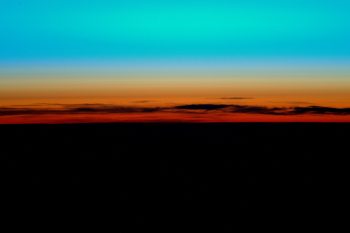
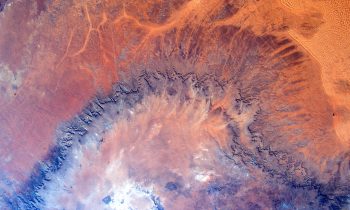
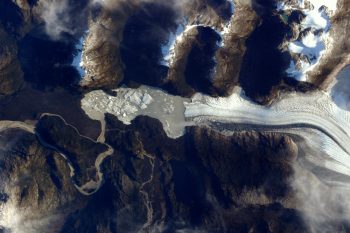
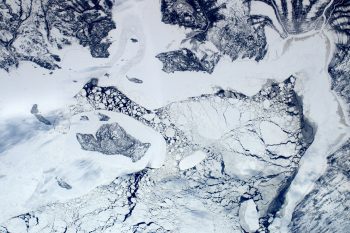
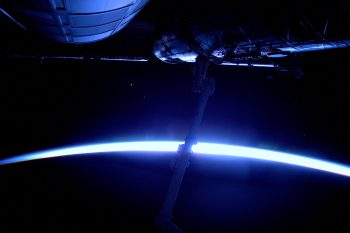
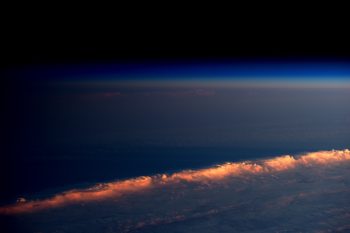
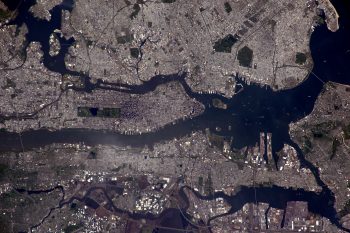
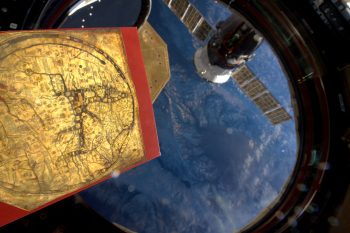
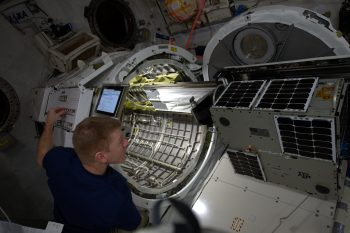
Discussion: one comment
Terrific stuff Max!